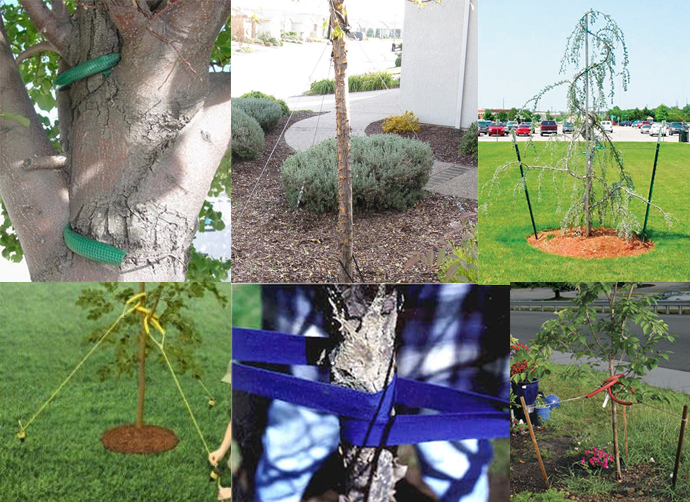Tracey from Rosenberg (Southwest of the Houston area) asks how long should she keep newly planted trees staked before they should be removed. The rule of thumb is that tree staking should be removed at one year from the time of planting. Typically tree or landscape installation companies will end their tree warranties at one year for the same reason that tree stakes are removed at one year. If the tree is not established at the one year mark, then it is probably dead or never plans to establish (will die soon). After one year of growth, the tree trunk begins to outgrow the tree staking wires or cloth ties and will soon look like the first image of the set of six. The trunk grows around the obstacle, and you will have a hard time removing the obstacle ever again without damaging the tree.
Tree Staking Options
You can use any combination of metal, wire, rubber, cloth, or wood to stake a tree, and you probably won’t be wrong as long as you have kept slack in both the loops around the trunk and the material connecting to the stakes in the ground. Many types and combinations of staking are shown in the images provided, but my preference is to use cloth staking around the trees and connect to metal or wood stakes in the ground where the top of the stake is actually at ground level and not sticking up.
The following are my pros and cons for each material that can be selected.
Wire – Pro: durability, Con: not easily seen, can greatly harm a person if it is run into (at head/neck level or as a trip hazard)
Rubber – Pro: typically used to wrap wire and protect tree trunk
Cloth – Pro: a safer option than wire with good durability, protects tree trunk
Wood – Pro: stakes the root ball only while eliminating material to be wrapped around trunk, Con: can be a minor trip hazard if not installed properly
Metal – Pro: durability, Con: can cause harm if run into
